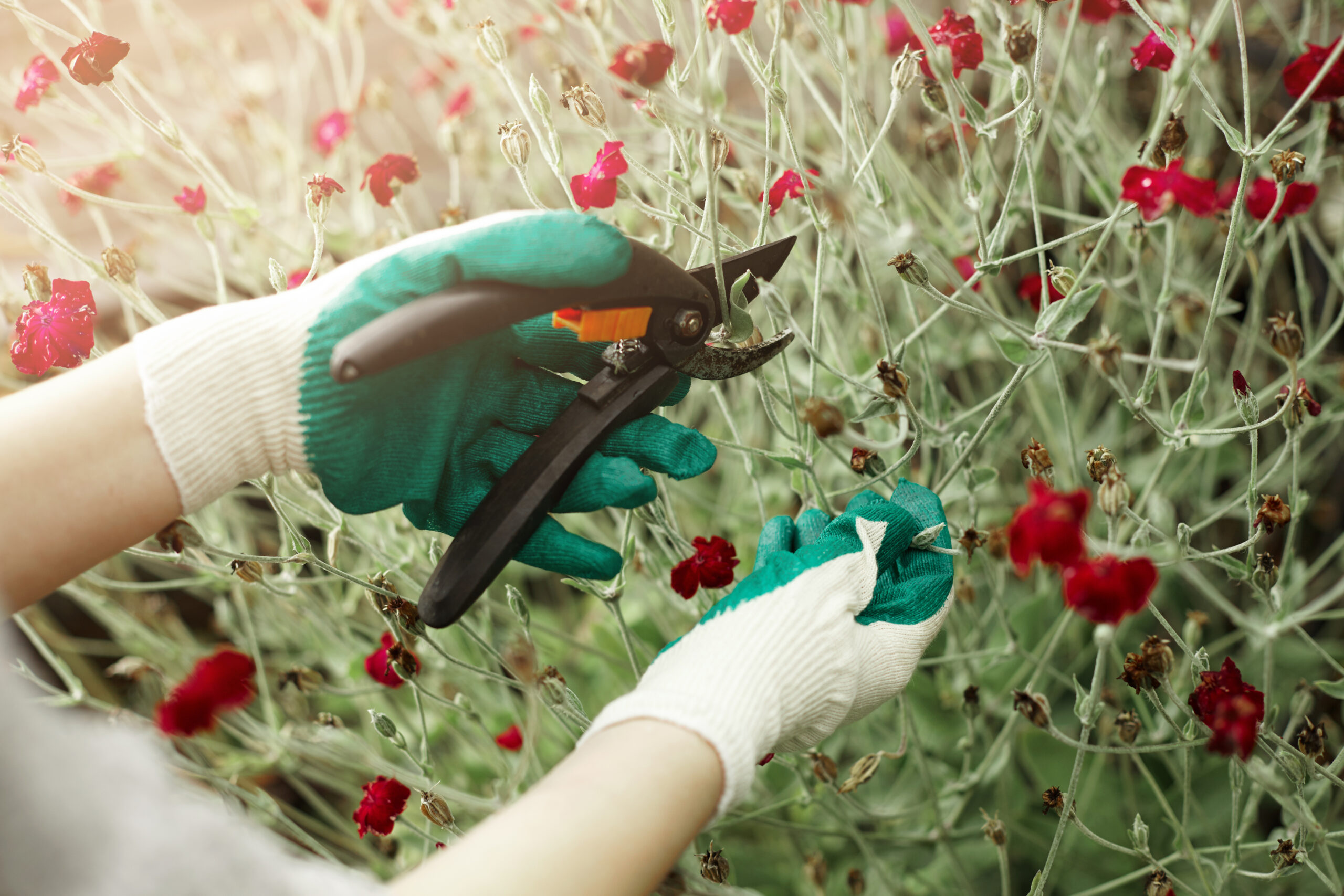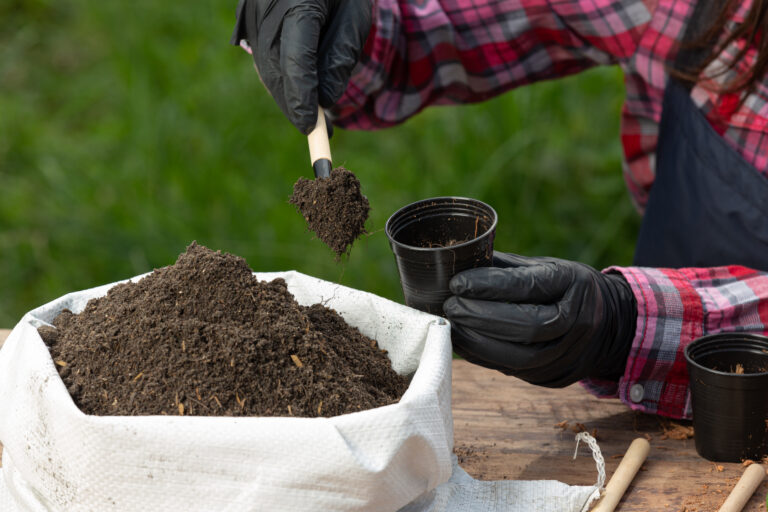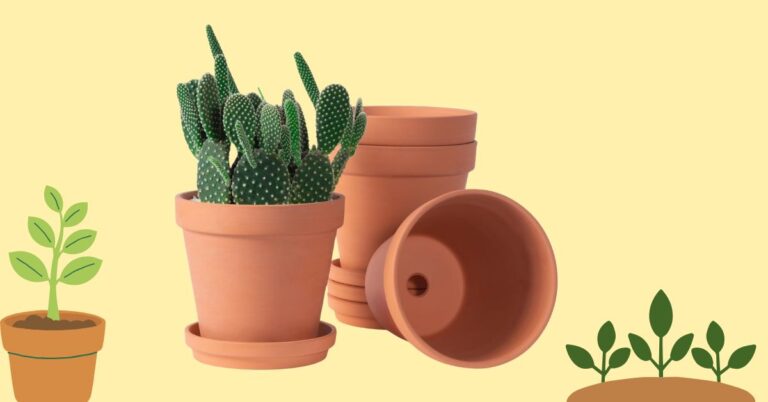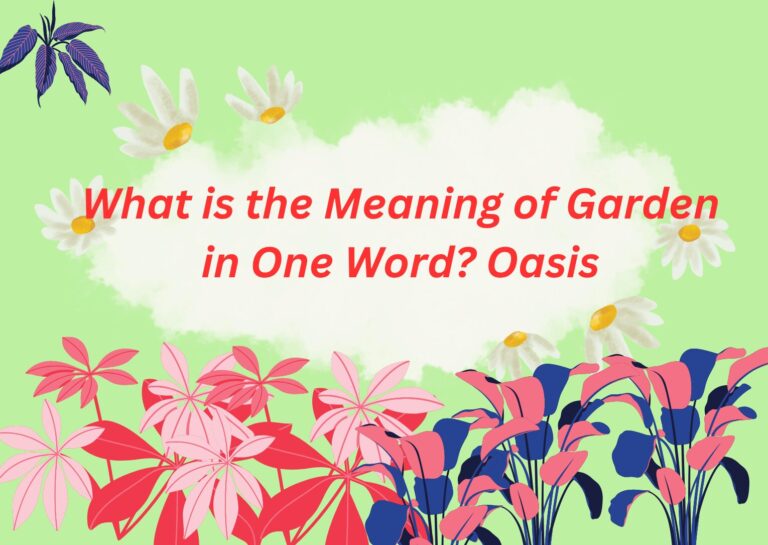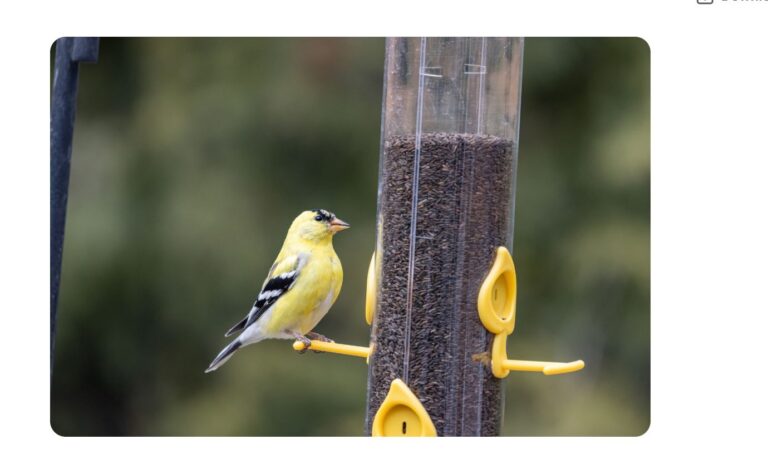5 best weed killer for flower garden
Do you dream of a flower garden bursting with color and vibrant blooms? A place where every plant is exactly where it should be, a testament to your hard work and care? For many gardeners, this dream is constantly under siege. The biggest threat to a beautiful flower garden isn’t pests or disease—it’s weeds.
These unwelcome invaders are more than just an eyesore; they’re a direct threat to the very life of your flowers. Weeds are relentless competitors, stealing vital soil nutrients and water that your flowers desperately need to grow and thrive.
They crowd out your precious plants, hogging sunlight and space, which directly impacts the size and quality of your flower bloom production. It’s frustrating to watch your careful planning and effort get overshadowed by these aggressive plants.
But you don’t have to surrender your garden. This guide will review safe and effective weed killers specifically designed for flower beds.
We’ll explore different options, from powerful commercial herbicides to gentle, natural solutions, helping you find the right tool for effective weed control that protects your flowers and preserves your soil health.
Product Reviews – 5 Best Weed Killers for Flower Gardens
1. Roundup Weed & Grass Killer₄ with Pump ‘N Go 2 Sprayer

This is a powerful, ready-to-use herbicide designed for efficient and precise application. Its key highlight is the built-in Pump ‘N Go 2 Sprayer, which provides a continuous spray without the fatigue of a trigger sprayer. It is a non-selective, systemic weed killer, meaning it is absorbed by the plant’s leaves and travels down to the root, killing the entire plant.
My Experience / Practical Use Case: The Pump ‘N Go Sprayer is a game-changer for covering small to medium areas without hand strain. I’ve found it to be exceptionally effective on stubborn weeds like mature dandelion and crabgrass. The weed starts to yellow and wilt within hours, and within a few days, it’s completely dead, root and all. However, because it is non-selective, extreme caution is necessary. You must use the precision spray pattern to target only the weed, as any drift or accidental spray will harm your flowers. It is not safe for flowers and should be used with a shield to protect nearby plants.
Pros:
- Convenient and easy-to-use continuous spray.
- Highly effective at killing weeds down to the root.
- Fast-acting with visible results in hours.
- Rainproof in only 30 minutes.
Cons:
- Non-selective—will kill any plant it touches.
- Not suitable for large-scale lawn or garden treatment.
- Contains glyphosate, which some gardeners prefer to avoid.
Who It’s Best For: Gardeners with a few persistent, tough weeds in specific areas, who need to kill the weed at the root and are confident they can apply the product with precision to avoid harming their flowers.
2. Spectracide Weed & Grass Killer 2

Spectracide Weed & Grass Killer 2 is a ready-to-use spray that provides a quick, visual result. It is a non-selective, contact-based herbicide, which means it works by rapidly damaging the plant’s leaves, causing them to wither and die. Its primary highlight is its speed, with results often visible in as little as three hours.
My Experience / Practical Use Case: I’ve used this for quick clean-up on driveways and walkways where I wanted to see weeds die quickly. It lives up to its claim of being fast-acting—you can literally watch the weeds begin to brown. However, because it is a contact killer, it may not kill the entire root system of a tough perennial weed. For something like dandelion, the top growth will die, but the root may survive and regrow later. It is not safe for flowers and requires the same careful application as other non-selective products.
Pros:
- Extremely fast-acting for quick visual results.
- Ready-to-use and easy for spot treatments.
- Rainproof in only 15 minutes.
Cons:
- Does not kill the roots of all weeds.
- Non-selective—will kill any plant it touches.
- Best for small, shallow-rooted weeds.
Who It’s Best For: Gardeners who prioritize a fast, visible result and need to quickly treat weeds on hard surfaces or in areas where a total kill is not required.
3. Roundup Weed Barrier Granules for Weed Prevention

This product is fundamentally different from the first two. It is a granular, pre-emergent herbicide designed to prevent weeds from sprouting in the first place. You apply it to the soil surface, where it creates a barrier that stops weed seeds from germinating for up to eight months.
My Experience / Practical Use Case: This is the best tool for reducing future weeding. I apply this in the spring to my established flower beds. It doesn’t kill any weeds that are already growing, so I make sure to remove those first. After that, I notice a significant reduction in new weeds popping up, including grassy weeds and broadleaf weeds. The key is to apply it at the right time, before seeds have germinated. Once applied and watered in, it provides a protective shield. It is safe for flowers once they are established.
Pros:
- Provides long-lasting, season-long weed control.
- Reduces the need for manual weeding.
- Easy to apply with a garden spreader.
- Safe for flowers and shrubs (check the label for specific plants).
Cons:
- Does not kill existing weeds.
- Must be applied at the correct time of year.
- Cannot be used in areas where you plan to plant new seeds.
Who It’s Best For: Gardeners who are proactive about weed control and want a simple solution to prevent new weeds from sprouting throughout the growing season.
4. Ortho 0438580 Grass B Gon Garden Grass Killer

This ready-to-use spray is the perfect example of a selective herbicide. It is specifically formulated to kill grassy weeds without harming your flowers and ornamental plants. Its active ingredient targets the unique cellular structure of grasses.
My Experience / Practical Use Case: This product is a lifesaver when you have crabgrass or other grassy weeds growing right in the middle of a flower cluster. I can spray this product directly onto the grass blade and know that it will not harm the broadleaf flowers next to it. It kills the grass slowly, over several days, but it gets the job done without any collateral damage. It is a true specialist tool for a very specific problem. It is safe for flowers and shrubs.
Pros:
- Safe for flowers and other ornamental plants.
- Effectively kills grassy weeds like crabgrass.
- Ready-to-use and easy for spot treatments.
- A great solution for a common garden problem.
Cons:
- Only kills grassy weeds; it is not effective on broadleaf weeds like
dandelionorclover. - Results are not instantaneous.
Who It’s Best For: Gardeners whose main weed problem is grass invading their flower beds and who need a solution that won’t harm their desired plants.
5. Bonide Captain Jack’s Deadweed Brew

Bonide Captain Jack’s Deadweed Brew is a ready-to-use, fast-acting herbicide that is a great option for organic gardening. Its active ingredient is a type of fatty acid that works by burning and dehydrating the plant on contact. Because its ingredients are naturally derived, it’s considered a non-toxic alternative to synthetic chemicals.
My Experience / Practical Use Case: This product works very fast, especially on a warm, sunny day. It’s like pouring boiling water on the weeds—the leaves shrivel up and die within hours. It’s a fantastic non-toxic choice for gardeners who want to avoid synthetic chemicals. The downside is that like other contact killers, it may not kill the entire root of a tough weed, requiring a second application. It is not safe for flowers, as it will kill anything it touches, so you must use it carefully.
Pros:
- Fast-acting with quick, visible results.
- Suitable for organic gardens.
- Non-toxic and biodegradable.
- Works in cooler temperatures (down to 40°F).
Cons:
- Non-selective—will kill any plant it touches.
- May require repeat applications for deep-rooted weeds.
- More expensive than some chemical alternatives.
Who It’s Best For: Gardeners who are committed to organic methods and want a fast-acting, chemical-free way to kill weeds in areas like patios or gravel paths, or for very careful spot-weeding in a flower garden.
Buying Guide: What to Look For in a Weed Killer for Flower Beds
Choosing a weed killer for a flower garden is not the same as choosing one for a driveway or a fence line. The stakes are higher; you’re not just trying to kill a weed, you’re trying to protect your valuable flowers, preserve your soil, and ensure the safety of beneficial insects. To make a truly informed decision, you need to consider more than just a product’s promise to “kill weeds.” Here’s a detailed guide on what to look for when shopping for a weed killer for your flower beds.
1. Safety for Flowers and Pollinators
This is the most critical factor. The primary reason for a flower garden is to create beauty and support nature. A weed killer that harms your blooms or the creatures that help them thrive defeats the entire purpose.
- Safety for Flowers: The first thing to check is whether the product is selective or non-selective. A non-selective weed killer will kill any plant it touches. These should be used with extreme caution, if at all, in a flower bed, often with a protective shield to prevent drift. Instead, look for selective herbicides that are specifically formulated to kill weeds without harming certain types of flowers. For instance, some products target broadleaf weeds but are safe for ornamental grasses. Always check the label to ensure the product is compatible with the specific plants you have, such as annuals, perennials, or shrubs.
- Safety for Pollinators: The health of our ecosystem, and our gardens, depends heavily on pollinators like bees, butterflies, and hummingbirds. Many common herbicides can be toxic to these vital insects, either directly through contact or indirectly by contaminating the flowers they visit. Look for products that are explicitly labeled as bee-friendly or non-toxic weed killer. Many gardeners who practice eco-friendly gardening avoid products containing controversial chemicals and instead opt for organic or natural solutions. If you must use a synthetic herbicide, apply it in the evening after pollinators have returned to their nests and the flowers have closed for the day. This minimizes their exposure. The rise of glyphosate-free products is a direct response to growing consumer concerns about the environmental impact of certain chemicals, making them a popular choice for eco-conscious gardeners.
2. Soil Compatibility
A healthy garden starts with healthy soil. The ingredients in a weed killer can have a lasting impact on your soil’s chemistry and future fertility.
- Impact on Soil pH: Every plant has an optimal soil pH range in which it can absorb nutrients most effectively. Many weed killers, especially homemade mixtures containing salt or those with high mineral content, can alter the soil’s pH balance. A buildup of salt, for example, can make the soil inhospitable to plants for an extended period, essentially sterilizing it. Look for products that are labeled as “soil-neutral” or that are known to break down quickly into harmless components. Organic weed killers and systemic herbicides (which travel into the plant rather than sitting in the soil) are often better in this regard. A healthy soil microbiome is essential for plant growth, and a harsh chemical can disrupt this delicate balance.
3. Ease of Application
The method of application can significantly affect the product’s effectiveness, your safety, and the amount of effort required.
- Ready-to-Use Sprays: These come in a pre-mixed container with a built-in sprayer. They are the easiest and most convenient option for spot-treating individual weeds. There’s no measuring or mixing, which reduces the risk of error. However, they are generally the most expensive option on a per-gallon basis and are not practical for covering large areas.
- Concentrates: These are highly concentrated liquids that you must mix with water in a separate sprayer. They are the most cost-effective choice for treating a large flower garden or for repeated use. The downside is that they require careful measurement and a bit more effort.
- Granular Products: These come in small, solid pellets or granules that you sprinkle directly onto the soil. They are primarily used as pre-emergent weed control to prevent seeds from sprouting. Granular products are excellent for providing a barrier of protection over a large, mulched area but are not effective at killing existing weeds.
4. Longevity of Results
How long do you want the product to work? Weed killers can be categorized by the duration of their effectiveness.
- Short-Term Control: Products like vinegar-based or fatty-acid herbicides are “contact killers.” They work by destroying the weed’s leaves on contact, causing the plant to wither. However, they typically don’t kill the root system. This means perennial weeds can regrow, and you may need to reapply the product. These are best for small, annual weeds.
- Systemic Control: These weed killers are absorbed by the plant and travel down to the root, killing the entire plant. This is the best method for getting rid of tough, established, or deep-rooted weeds for good. Systemic weed killers are often slower-acting than contact killers, with visible results taking several days or even a week.
- Season-Long Control: These are usually granular, pre-emergent products that prevent weeds from sprouting for several months. A single application can provide season-long control, drastically reducing the amount of time you have to spend weeding throughout the growing season. While they don’t kill existing weeds, they are a powerful tool for maintaining a weed-free garden.
By carefully considering a product’s safety, its impact on the soil, its ease of use, and the longevity of its results, you can select the perfect weed killer to protect your garden. This thoughtful approach ensures your flowers remain the star of the show while you maintain a healthy, vibrant, and beautiful space
Types of Weed Killers for Flower Gardens
Choosing the right weed killer requires understanding the different types available and how they work. The key is to find a product that targets the weeds without harming your flowers. This often means staying away from general-purpose, non-selective products that kill everything in their path. Here’s a breakdown of the primary categories of weed killers for flower gardens.
1. Organic Weed Killers
For gardeners committed to organic gardening, there are several non-synthetic options that can be effective. These solutions use naturally derived ingredients to burn or dehydrate weeds.
- Vinegar-Based Products: Horticultural vinegar is a concentrated form of acetic acid. When sprayed on weeds, it quickly burns the leaves and stems, causing the plant to wither and die. These products are most effective on young, shallow-rooted weeds. Since they don’t typically kill the roots, a follow-up application is often necessary for perennial weeds that can regrow.
- Soap-Based Products: Fatty acid soaps work by breaking down the waxy cuticle on a weed’s leaves, causing it to dehydrate. Like vinegar, they are contact killers and work best on small, annual weeds.
- Corn Gluten Meal: This is a truly unique organic weed control option. Corn gluten meal is a natural byproduct of corn processing. When applied to the soil, it acts as a pre-emergent, meaning it prevents weed seeds from sprouting. It does this by inhibiting root formation after a seed has germinated. While it won’t kill existing weeds, it’s an excellent preventative measure for gardeners who want to stop new weeds from appearing in the first place.
2. Selective Herbicides
Selective herbicides are a game-changer for gardeners because they are specifically formulated to kill certain types of plants while leaving others unharmed. This is crucial for a flower garden where you want to eliminate weeds but protect your cherished flowers.
- How They Work: Selective herbicides target specific biological processes unique to a plant’s family. A common example is a product that kills broadleaf weeds (like dandelions and clover) but leaves grassy plants (like your lawn or ornamental grasses) unharmed. For a flower bed, you would look for a selective herbicide that targets weeds without harming your desired flowering plants.
- Active Ingredients: Look for products with active ingredients that are known to be safe for your specific flowers. Always read the product label carefully to ensure it’s suitable for use around your particular plants. This is the most effective way to kill weeds without the risk of harming your flowers.
3. Pre-Emergent Weed Control
Pre-emergent herbicides are a powerful tool for weed control that works by preventing weeds before they even appear.
- How They Work: These products form a chemical barrier in the top layer of the soil. When weed seeds begin to germinate, they absorb the herbicide and are prevented from growing roots and shoots. This effectively stops the weed from sprouting.
- Application: Pre-emergents must be applied at the right time—before weed seeds have germinated. Applying them after weeds have already sprouted is ineffective. They are an excellent solution for preventing annual weeds that grow from seeds each year. Combining a pre-emergent with a post-emergent (a weed killer that kills existing weeds) is a great strategy for a comprehensive weed management plan.
4. Natural Homemade Options
For a quick, low-cost solution, many gardeners turn to mixtures they can make at home.
- Vinegar, Salt, and Baking Soda Mix: A common recipe involves mixing household vinegar, salt, and a small amount of dish soap. The vinegar and salt act as a dehydrating agent that burns and kills the top growth of weeds. The dish soap acts as a surfactant, helping the mixture stick to the leaves.
- Caution: While these mixes can work on young weeds, they have significant drawbacks. Salt can build up in the soil, making it difficult for other plants to grow in the future. These solutions are generally non-selective, so they will harm any plant they come into contact with. They are best used in areas where you don’t plan to plant anything, such as cracks in a driveway or walkway, not in your flower beds.
Choosing the Right Weed Killer
When selecting a weed killer for your flower garden, the choice comes down to your priorities.
- For those committed to organic gardening and environmental sustainability, using organic weed killers or corn gluten meal is the best option.
- For targeted weed removal with minimal risk to your flowers, selective herbicides are the most effective choice.
- For preventing future weed growth and reducing the need for constant weeding, pre-emergent weed control is a powerful preventative strategy.
Always read the product labels, follow instructions carefully, and consider the long-term impact on your soil health and surrounding plants. With the right knowledge, you can win the battle against weeds and keep your garden looking its best.
FAQs About Weed Killers for Flower Gardens
Is vinegar a safe weed killer for flower gardens?
Using household vinegar as a weed killer is a common homemade solution, but it comes with significant risks. While vinegar can be an effective way to kill the top growth of a weed on contact, it is not considered safe for a flower garden. The main reason is that it is a non-selective acid that will burn and damage any plant tissue it touches—including your flowers. Furthermore, repeated application of vinegar can alter the soil pH over time, making it too acidic for many flowers to thrive. For these reasons, vinegar is best reserved for areas like driveways or walkways where you don’t want any plant growth.
Can I use pre-emergent weed killers around annuals and perennials?
This depends on the specific type of plant. Pre-emergent weed killers work by preventing seeds from germinating.
- Perennials: You can generally use pre-emergents around established perennials without risk, as these plants grow back from their existing root systems each year. Applying a pre-emergent in early spring can be a great way to prevent new weed seeds from sprouting around your established flowers.
- Annuals: You cannot use pre-emergents in areas where you plan to plant new annuals from seed, as the product will prevent your flower seeds from sprouting as well. However, you can use them around existing annuals after they have already sprouted and are established. Always check the product label for specific instructions and a list of plants that are safe for use.
How long should I wait before planting flowers after applying weed killer?
This is a crucial question, and the answer depends entirely on the type of weed killer used.
- Contact Killers (e.g., vinegar, fatty acid sprays): These products kill only the top growth of the plant and break down quickly. You can often plant new flowers within a few days of application, but it is best to check the product’s label for a specific waiting period.
- Systemic Herbicides (e.g., glyphosate): These products can remain active in the soil for a period of time, although many are formulated to break down. The waiting period can range from a few weeks to several months. Always check the label for the recommended “re-seeding” or “replanting” interval.
- Pre-Emergent Herbicides: You must not plant seeds after applying a pre-emergent. If you want to plant seeds in the treated area, you must wait until the product’s effectiveness has worn off, which could be several months.
Are natural weed killers safe for pets and children?
Many people turn to natural weed killers, like those made with fatty acids (e.g., Bonide Captain Jack’s Deadweed Brew), believing they are completely safe. While these products are often considered a more natural pet-safe weed killer than synthetic alternatives, they should still be used with caution. The acids in these products are designed to burn plant tissue and can also cause skin irritation or other harm to pets and children if they come into direct contact with the liquid before it dries. Always keep pets and children away from a treated area until the spray has completely dried. The best practice is to always follow the safety instructions on the product label and store the product out of reach.
Conclusion
Maintaining a weed-free flower garden can seem like a never-ending battle, but by choosing the right tool for the job, you can achieve a beautiful and healthy space. The key is to match your approach to your gardening philosophy and your specific weed problem.
For gardeners who prioritize sustainable gardening and a healthy ecosystem, focusing on eco-friendly weed control is the best path forward. This means exploring organic solutions like corn gluten meal and fatty acid sprays, and relying on cultural practices like mulching and hand-weeding.
For those with tough, established weeds, a targeted approach with a specialized tool is the most effective. Using a selective herbicide for grassy weeds or a systemic one for perennial weeds can provide powerful flower protection and long-term relief.
Our best pick for long-term flower garden weed control is a combination approach: use a pre-emergent granular product in the early spring to prevent weed seeds from sprouting, and then use a selective, spot-treatment spray to handle any weeds that manage to grow later in the season. This two-pronged strategy is the most efficient way to keep your garden looking its best.
By making an informed choice, you can reclaim your garden from unwanted weeds and ensure your precious flowers are the true stars of the show

